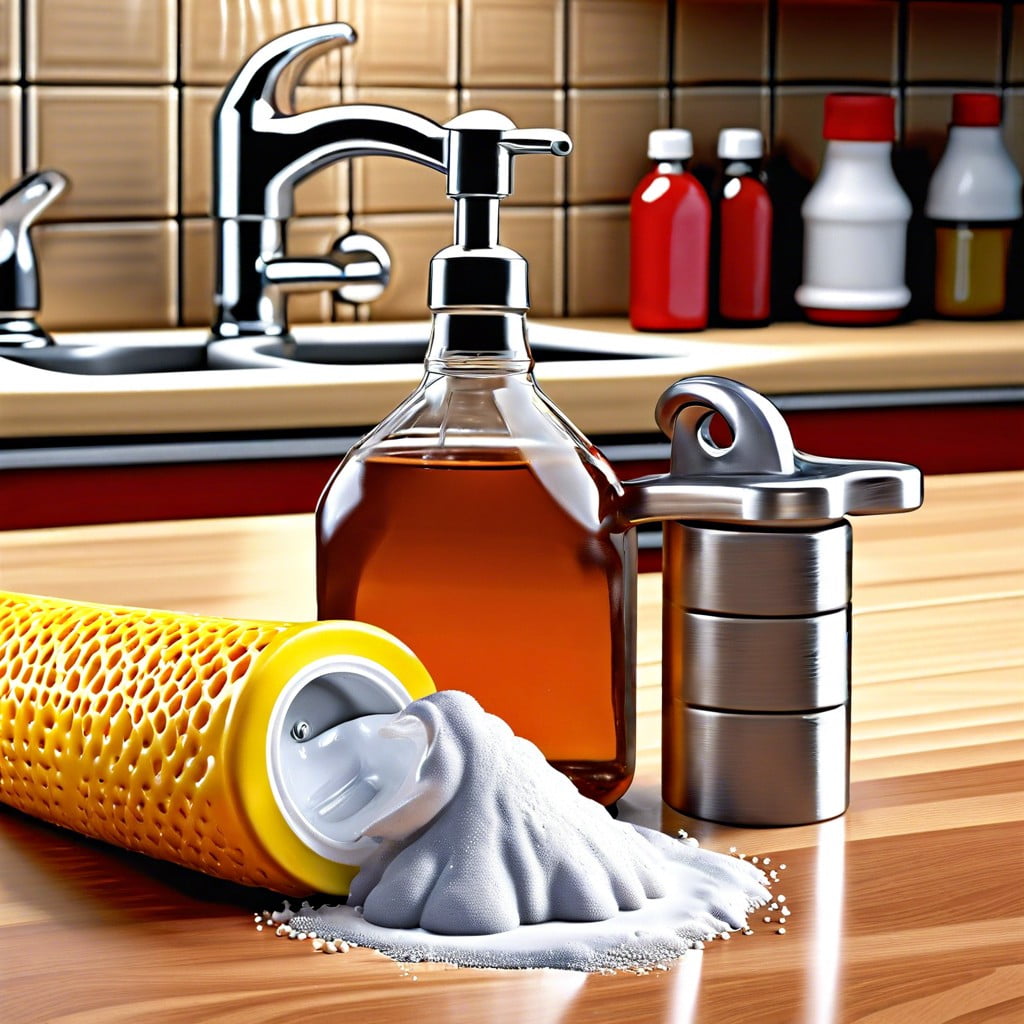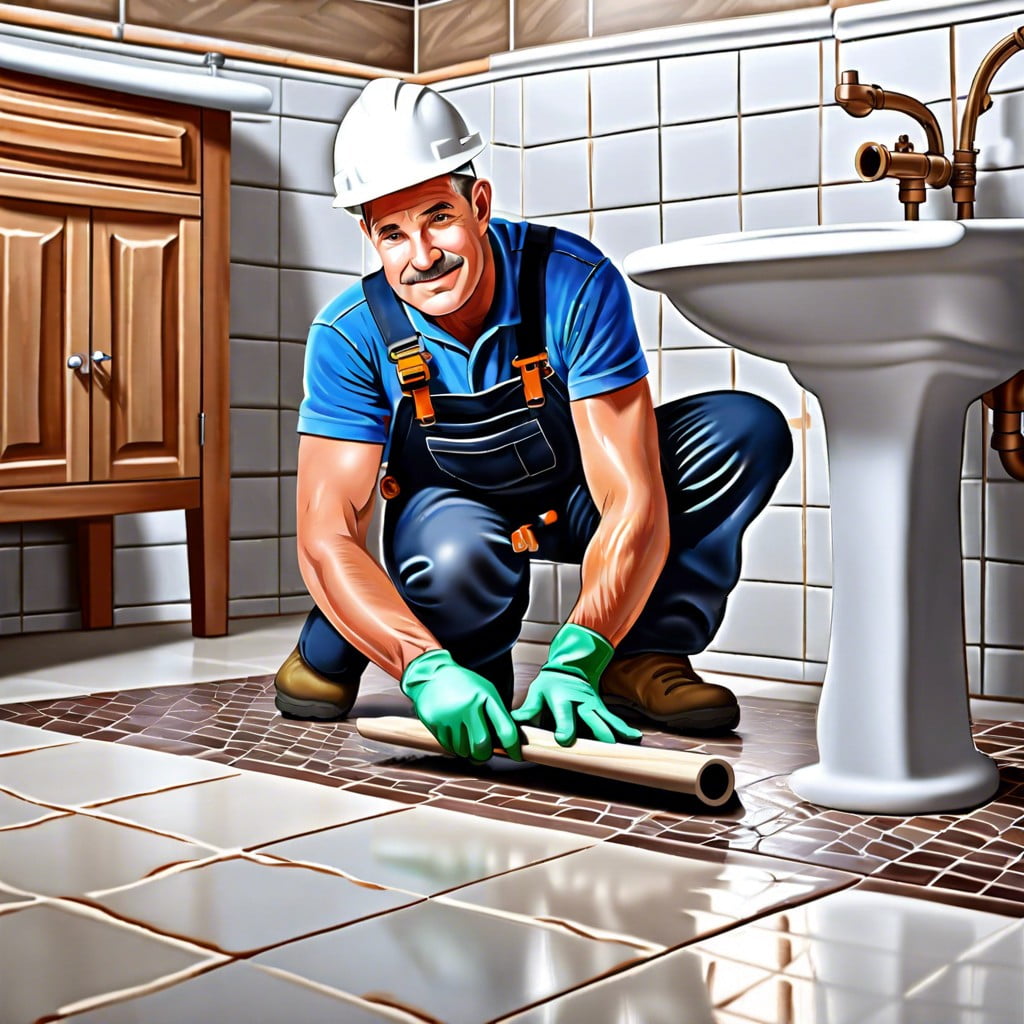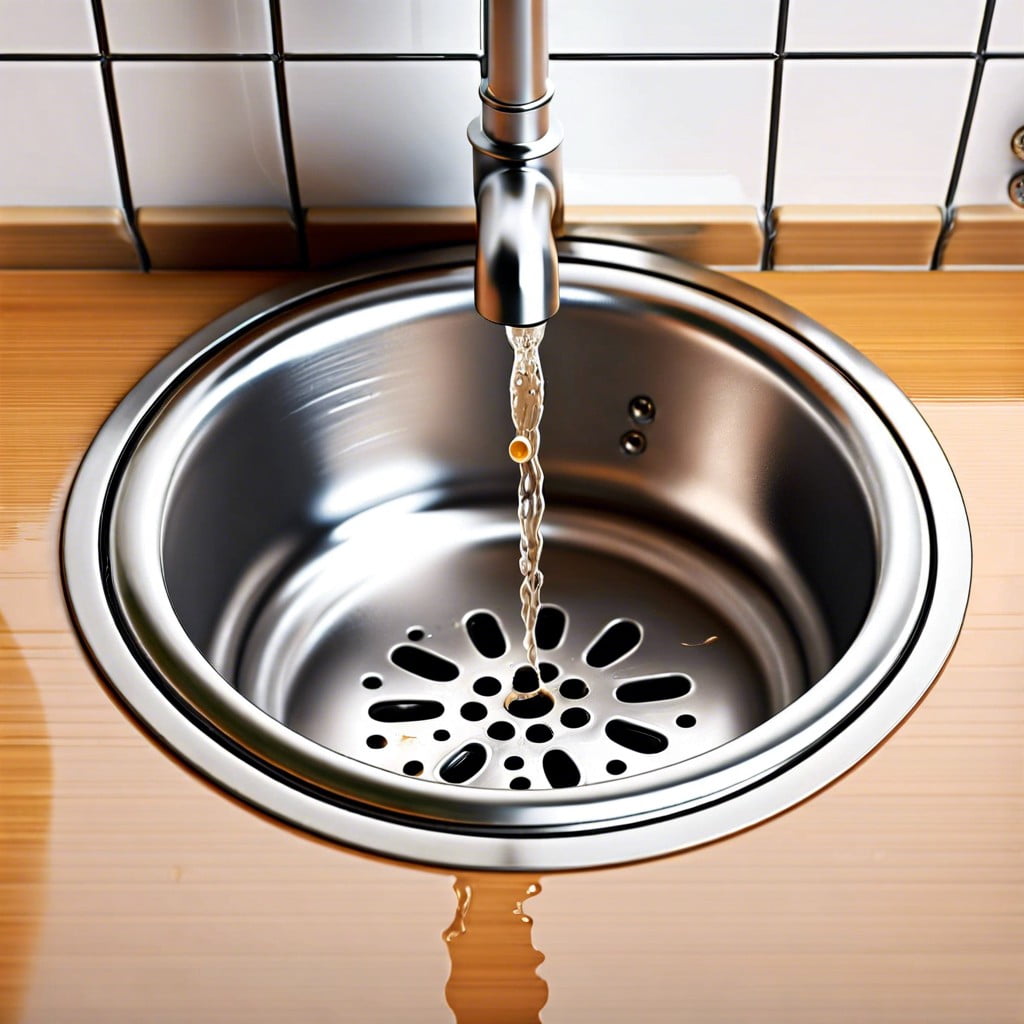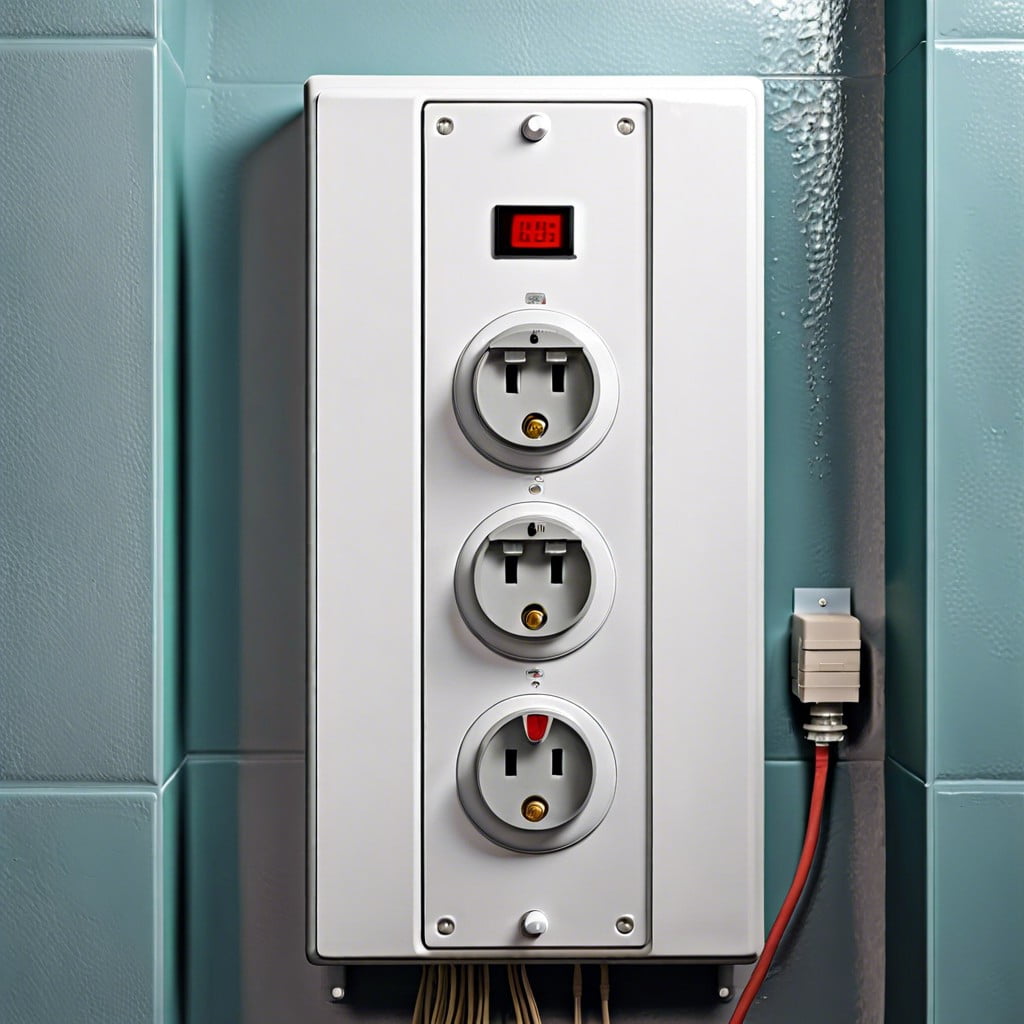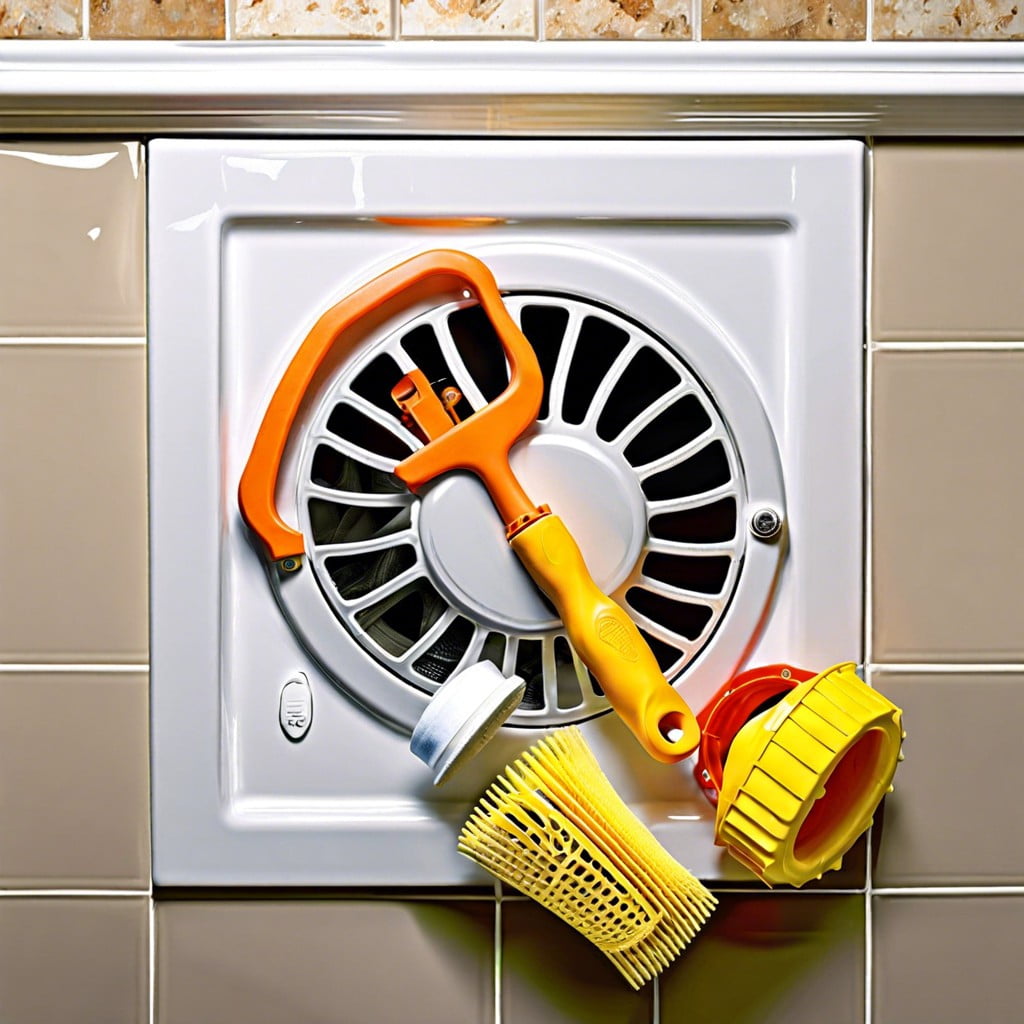Last updated on
This how-to article will guide you through the most effective methods for cleaning your bathroom floor, ensuring a sparkly finish without unnecessary effort.
Key takeaways:
- Sweep or vacuum before wet cleaning to remove loose debris.
- Use a pH-neutral cleaner to prevent damage to grout and tile.
- Rinse thoroughly with clean water to remove residual cleaner.
- Allow the floor to air-dry or use a dry mop for streak-free results.
- Pay special attention to corners and around the toilet base.
What You’ll Need
Gather these essentials to ensure a thorough clean:
- Broom or vacuum: Remove loose debris before wet cleaning.
- Mop: A microfiber mop is preferred for its effectiveness and eco-friendliness.
- Bucket: Preferably one with a wringer to control water application.
- Cleaning solution: A pH-neutral cleaner prevents damage to grout and tile finish.
- Scrub brush: An angled brush helps target grout lines and corners.
- Rubber gloves: Protect your skin from cleaners and grime.
- Old towels or rags: For drying the floor post-wash, reducing slip hazards.
Instructions
Begin by sweeping or vacuuming to remove loose dirt and hair. If not eliminated first, these particles can make the cleaning process harder, possibly scratching your tiles or creating a muddy mess.
Next, mix a suitable cleaning solution. For general maintenance, a mild detergent with warm water often suffices, but for deeper grime, consider a specialized floor cleaner. Always read the labels to ensure compatibility with your flooring material. Harsh chemicals can damage some surfaces.
Apply the mixture to the floor, section by section, using a mop. Start from the farthest corner of the room, working backward towards the door to avoid stepping on the freshly cleaned surface.
For textured tile or grout lines, a scrub brush can address stubborn stains. Apply gentle, circular motions to avoid degrading the grout.
Finally, rinse thoroughly with clean water to remove any residual cleaner, which could attract more dirt if left behind. Changing the rinse water frequently will prevent redistribution of dirt onto your clean floor.
Allow the floor to air-dry, or use a clean, dry mop to speed up the process, ensuring no water spots or streaks are left behind.
Expert Q&A
Should I use a different cleaner for tile versus laminate flooring?
Yes, tiles often handle stronger solutions, but using a mild detergent mixed with warm water is effective for both. Laminate floors need gentle, non-abrasive cleaners to prevent damage.
Is it safe to mix bleach with other cleaners for a deeper clean?
No, mixing bleach with other cleaning agents can produce toxic fumes. Stick to one cleaner to avoid dangerous chemical reactions.
How often should I clean my bathroom floor?
For maintaining hygiene, weekly cleaning is recommended. In high-traffic bathrooms or during illness, increase the frequency.
Can steam cleaning be an alternative to traditional mopping?
Absolutely. Steam cleaning is effective at killing germs without chemicals, suitable for many bathroom floors. However, verify it’s safe for your specific flooring type.
What should I do about persistent grout stains?
A mixture of baking soda and water applied to the grout before scrubbing with a brush works wonders. For tougher stains, consider a specifically designed grout cleaner.
Tips
Harness the power of microfiber mops; their superior dirt-lifting abilities are often underrated.
When you can’t avoid the use of water, always go for warm—it enhances the effectiveness of cleaning agents.
Natural cleaners like vinegar and baking soda aren’t just for the eco-conscious; they pack a punch against grime without leaving harmful residues or overpowering scents.
Pay special attention to the corners and around the toilet base—these zones are magnets for mold and bacteria.
Lastly, don’t undermine the importance of drying the floor after cleaning to prevent slips and keep the space pristine.
Warnings
Caution is key while cleaning bathroom floors to prevent damage or personal injury.
Avoid mixing cleaning agents like bleach and ammonia, which can create toxic fumes.
Steer clear of abrasive scrubbers on delicate tile to prevent scratches.
Always test new cleaners on a small, inconspicuous area to guard against discoloration or damage.
Slippery when wet – a phrase to take seriously; make sure to dry the floor thoroughly or use a non-slip mat post-cleanup to prevent falls.
Remember, proper ventilation is paramount, especially in confined spaces like bathrooms, to disperse fumes and aid in drying.
Recap
